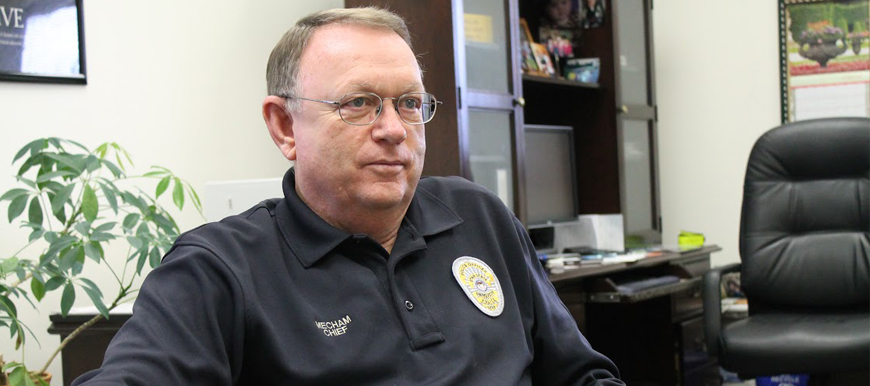USU, Logan police discuss officers wearing body cams
A growing trend in the world of criminal justice is something designed to help both police officers and those who come in contact with them: body cameras.
Police officers across the nation now don’t just suit up with a uniform and firearms, but also a camera, usually attached to the front of the shirt, said Steven Mecham, Utah State University campus police chief.
There’s been a big push across the country for all police officers have body cameras, Mecham said. USU police officers have had them for about two years and will be getting new and improved cameras in the coming month.
There are two main reasons the use of cameras has been implemented, said Mecham.
“One is for protection of the officers,” he said. “If they were accused of doing wrong, we want to be able to look. It’s also for the protection of the public. In case the officers do do something wrong, then we can verify that as well.”
Mecham said the USU police department has not yet had any complaints about officer conduct and have not had any incidents on campus calling for the use of film.
The cameras have helped with the reporting side of police work. Anywhere from filing reports on cases to compiling evidence, officers can use the film captured on their camera to move along the process of their daily endeavors.
“Before we had cameras, it was all just of what you documented,” said Cpl. Chris Kleven of the Logan City Police Department. “Now that we have cameras, it allows people to see what we’ve been saying all this time and what we’ve been doing. It sees the emotions of people, puts it in a little better perspective.”
The cameras are usually not turned on all day or even for a full shift. Disputes, interviews and anything called in that the officers feel should be documented are recorded as soon as the officers turn on their cameras, said Kleven. They can then go back over it and make as accurate a report as possible.
“I think it’s kind of a comfort to have them just because there are so many people out there who are so negative against the police,” said KC Winslow, an officer with the Logan Police. “And that way, we always have these to back up our point of view and what we saw and what we did.”
However, cameras are limited, not being able to see everything that the human eye can.
“The problem with body cameras or with any camera is that it doesn’t always tell the whole story,” Mecham said. “Cameras are one-dimensional, and they show one angle and so you might see something on the video and say, ‘This officer obviously did something wrong because of what I’m seeing on the video.’ But the reality is that it could be that the camera picked up something that the eye couldn’t see because of lighting. It could be that something was going on out of the camera view that caused the action of the officer. And so that becomes a real problem.”
Utah state legislature met in January and discussed better training and more accountability — one way being with the use of body cameras — of police officers. USU officers have authority through state statute, just as Logan City officers do.
The past few years have featured film caught on police officers’ cameras in the media, which often has not shed positive light on the officers. This is one reason states everywhere are looking into better ways to use the resources officers have for better accuracy and increased transparency in the justice system.
Currently all 30 of Logan’s officers and all 12 of USU’s officers use body cameras when on duty.
— mandy.m.morgan@aggiemail.usu.edu

